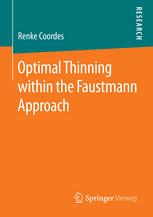

Most ebook files are in PDF format, so you can easily read them using various software such as Foxit Reader or directly on the Google Chrome browser.
Some ebook files are released by publishers in other formats such as .awz, .mobi, .epub, .fb2, etc. You may need to install specific software to read these formats on mobile/PC, such as Calibre.
Please read the tutorial at this link: https://ebookbell.com/faq
We offer FREE conversion to the popular formats you request; however, this may take some time. Therefore, right after payment, please email us, and we will try to provide the service as quickly as possible.
For some exceptional file formats or broken links (if any), please refrain from opening any disputes. Instead, email us first, and we will try to assist within a maximum of 6 hours.
EbookBell Team

4.0
96 reviewsForest stands are thinned all over the world. Yet, there was hitherto no consistent theory which allowed deriving unambiguous conditions for thinnings as the harvest of trees prior to the rotation age. Renke Coordes closes this gap by proposing a new, more general view on the Faustmann model as the basic investment model in forest resource economics. With the introduction of mutual interdependencies between the trees growing in a stand and the opportunity to harvest trees prior to the rotation age, optimal thinning regimes can be derived and analyzed. The implications of the proposed model are thoroughly discussed against the background of practical forest management decisions. The author closes with adaptations to the problems of the management of mixed, multiple-use and uneven-aged stands and entire forests. In this way, a unified perspective on the management of forests as natural resources is offered.